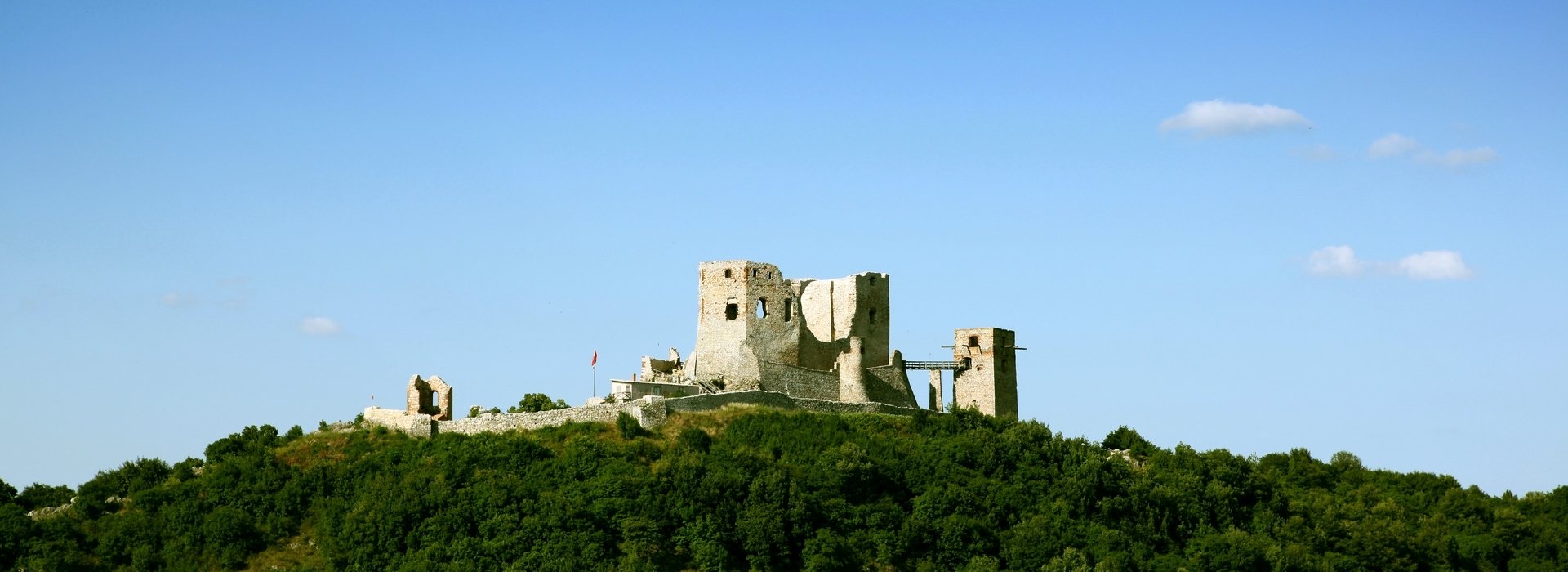

5 th century
The Hungarian tribes left the area of the Urals and passed along the Volga and the Caspian Sea . After several hundred years of wandering, they reached the Carpathian Basin .
896
Under the leadership of Árpád, the Hungarian tribes settled in the Carpathian Basin .
997-1038
King Stephen of the Árpád dynasty ruled the country.
1000
Stephen became converted to Christianity, and after his death, he was canonised.
1055
The abbey of Tihany was constructed. The foundation charter of the church is the earliest written record in Hungarian language.
1241
The Mongolian Tatars devastated the country. Their presence, which lasted a year, halted development for at least a century. After the warfare with the Hungarians, the Tatars did not continue towards the west.
1458-1490
During the rule of King Matthias, his residences (Buda and Visegrád) became cultural centres in Europe .
1526
At Mohács, the present southern frontier of the country, the Turks defeated the Hungarian army and 150 years of Turkish occupation started.
1541
The Turks occupied Buda and Hungary was split into three parts. The Habsburg governed the western part of the country, the central area was ruled by the Turks, and only the south-east Transylvanian principality remained Hungarian.
1686
Buda was recaptured from the Turks.
1703-1711
Under the leadership of Ferenc Rákóczi II, Prince of Transylvania, a freedom war was started against the Habsburgs. The rebels defeated the Imperial army in several battles, but did not receive the promised French support and failed.
First half of the 19 th century
A national reform movement was launched for the political and economic transformation of the country and for the support of the Hungarian language and culture. This was when the National Anthem was born, and the Hungarian Academy of Sciences was set up. The building of the Chain Bridge started with the support of Count István Széchenyi, one of the main characters of the Reform Ages.
1848-1849
A revolution broke out in Pest and extended over the entire country. The Habsburg Emperor was dethroned after the Hungarian army won several significant battles. Lajos Kossuth was elected Governor. Only with the help of the Russian army the Habsburgs could beat the longest European national revolution in the summer of 1849.
1867
The Hungarians concluded a compromise with the Habsburgs and the Austro-Hungarian Monarchy was established with Vienna and Pest-Buda as centres.
1873
Pest, Buda and Obuda were unified, Budapest became a European metropolis. Monuments like the Opera House, the National Gallery, the Parliament were built.
1918
Germany and its allies, including the Austro-Hungarian monarchy, lost the world war. The monarchy disintegrated.
1920
The Trianon Treaty reduced Hungary 's area by two thirds and the population by one third. Since then, considerable Hungarian minorities have been living in the neighbouring countries.
1938-1940
Germany concluded treaties in Munich and Vienna , according to which Southern Slovakia and Northern Transylvania were returned to Hungary .
1944
The Nazis occupied Hungary , as they did not consider it a reliable ally. During the Second World War, the Hungarians suffered grave losses on the Soviet front. At the end of the war, Fascists took over the governing of the country.
1945
The Soviet Army liberated, and then occupied Hungary . At the hastily held elections, the Communists won only 17 percent of the votes.
1947
The last, relatively free elections were followed by the years of Communist control: executions, deportation of hundreds of thousands, imprisonment, harassment, forced industrial development, fall of living standards, and Stalinist dictatorship.
1956
A revolution against Stalinism started, but the uprising was defeated by Soviet troops. János Kádár, who acquired power with their assistance, promised democratic socialism; in the meantime, retaliation and executions started.
1965
Cautious economic reforms were launched, living standards were rising and the iron curtain became penetrable.
1988
The Hungarian transition period began.
1990
The Communist party voluntarily gave up its autocracy. A multi-party parliamentary democracy came into being in the country. The Soviet army left Hungary .
1999
Hungary became full member of NATO.